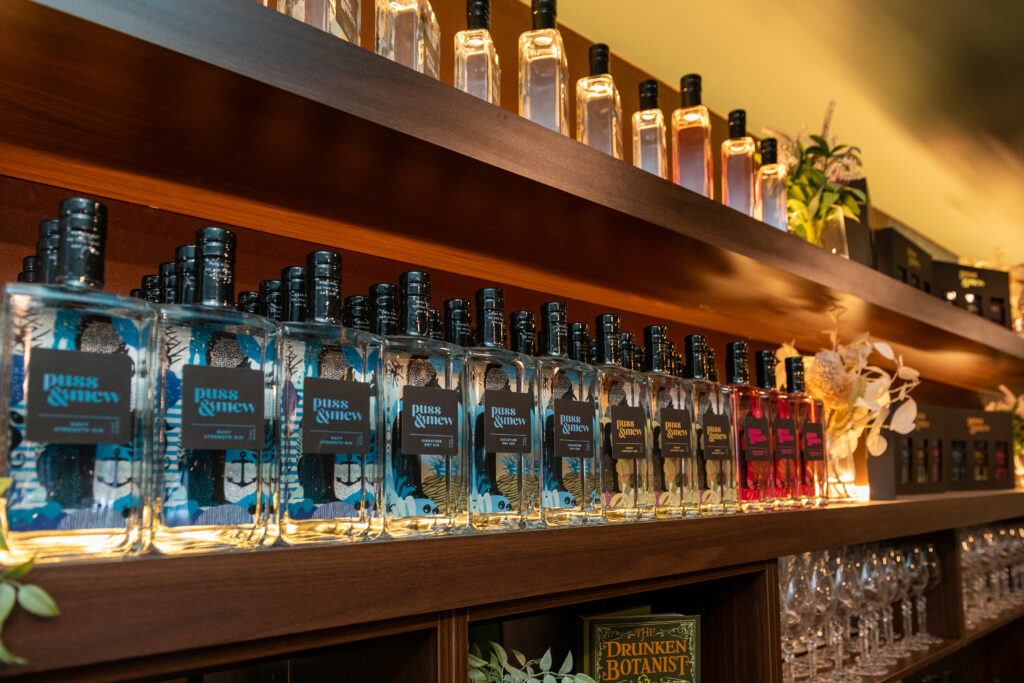Gin has become one of the most popular spirits in recent years, with many different brands and styles to choose from there are many opportunities to enjoy this refreshing drink . However, not everyone knows the steps to taste Gin properly. In this blog post, we will provide you with a comprehensive guide on the best way to taste Gin like a pro.
Choose your Gin
When sampling Gin, there are several factors to consider. First, it is important to understand the botanicals used in a well distilled Gin as they will give you a good indication of how the final product will taste. Gin botanicals can range from traditional juniper and citrus to more unusual herbs and spices like coriander and angelica root. Additionally, the type of distillation process used for the Gin will also affect its flavour profile. For example, most distilled Gins are created by either placing the botanicals in the boiler or through vapour infusion. Gin botanicals can taste different using both methods. Finally, be sure to consider the ABV (alcohol by volume) of your Gin as this can help determine how strong it will be. By taking these factors into consideration, you will be able to choose the perfect Gin for your taste.

Picking a Gin tasting glass
Choosing the right gin glass is crucial in order to fully enjoy the aroma and flavour when drinking Gin. A tulip-shaped glass is ideal as it allows the aromas to concentrate and the shape also accentuates the colour of the gin. The glass should also be large enough to hold the Gin as well as the ice cubes and tonic water/soda.
Swirl the Gin in the glass
Pour a small amount of Gin into the glass, approximately 15-30ml, and swirl it around the glass. This helps to release the aromas and flavours of the Gin. You can also try warming the Gin in your hand before swirling which can help to release more aromas.
Smell the Gin
Bring the glass up to your nose and take a deep breath in. This is important as the Gin aromas are a big part of the Gin tasting experience. Take note of the different aromas that you can detect, such as citrus, floral or herbal notes.
Tasting Gin
Take a small sip of the Gin (tasted neat) and let it sit in your mouth for a few seconds before swallowing to allow your taste buds to do their work. This allows the flavours to fully develop on your palate. When Gin tasting take note of the different flavours that you can detect, such as juniper, coriander or citrus.
Identify what the Gin tastes like
The botanicals used to make Gin are what give it its distinct flavour profile. If you’re curious about what goes into your favourite bottle of Gin, read on to learn how to determine the botanicals in any Gin.
The most obvious way to figure out what botanicals are used to make a Gin is to simply read the label or the tasting notes. Puss and Mew Distillery lists their ingredients directly on the bottle, making it easy for you to identify exactly what’s in your favourite Gin flavour combination.
You can also taste gin using sensory evaluation to try and identify the main botanicals in a Gin. Start with a blind taste test of your chosen gin alongside one or two others that you know well. Make notes about the flavour profile of each—is it Floral? Citrusy? Herbal? Earthy? The flavours you detect are likely caused by certain botanicals, so make sure to take detailed notes on each sip so you can work out what might be inside that bottle.

Add an ice cube to your Gin
Drop an ice cube into the glass. The change of temperature and dilution will open up the botanicals and change the experience of tasting Gin. This allow’s the opportunity for further botanicals to be identified as the flavour opens up.
Add a Mixer to your Gin
Tonic water is a common mixer for gin, but it can also affect the flavour of tasting Gin. Try adding different amounts of tonic water to see what will mix perfectly for you. You can also get creative with different flavoured tonics, soda and garnishes to enhance the flavour.
Gin tasting conclusion
Tasting Gin properly can greatly enhance your enjoyment of this popular spirit. By following these simple steps, you can improve your Gin tasting skills and learn to appreciate the different aromas and flavours that each Gin has to offer. Stay tuned for our series to highlight some of Gins most popular botanicals. Cheers to a great gin tasting experience!

